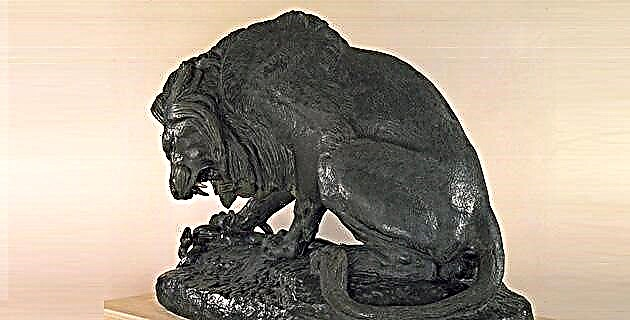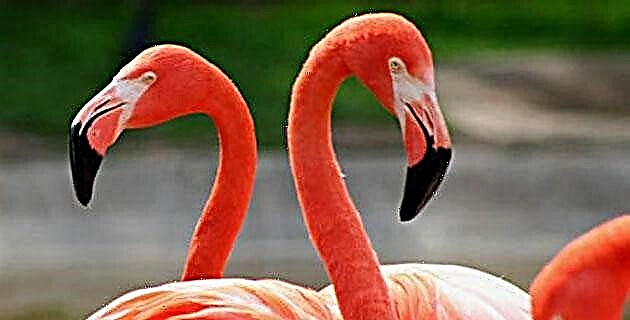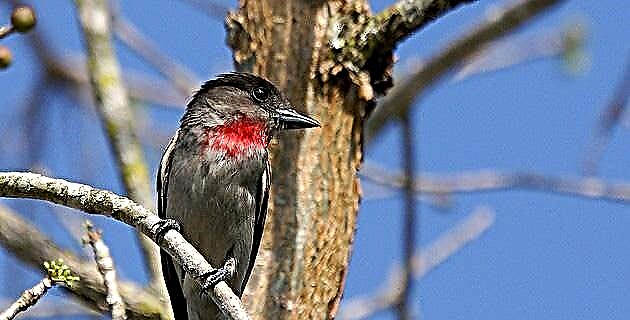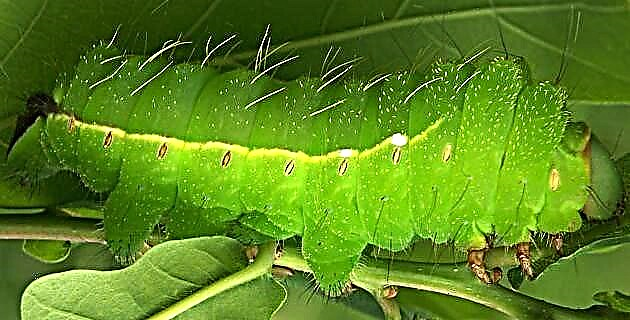
In its creation, nature displayed a great deal of fantasy. It is the result of a surprising process of gestation, birth, molts and metamorphosis of the Bombyx mori, the only being on earth capable of producing the fine threads of silk.
In its creation, nature displayed a great deal of fantasy. It is the result of a surprising process of gestation, birth, molts and metamorphosis of the Bombyx mori, the only being on earth capable of producing the fine threads of silk.
For many years, the Chinese managed to preserve the secret of silk production through extremely drastic measures, even applying the death penalty to anyone who dared to remove eggs, worms or butterflies of the species from their territory.
Sericulture is the combination of human care and the work of a worm possessing the invaluable ability to produce, with its salivary glands, thousands of meters of the very fine thread. With it he makes his cocoon and takes shelter during the metamorphosis process that leads him to become a beautiful butterfly.
Sericulture does not require much investment or physical strength, but it does require dedication and care of temperature, humidity, time and cleanliness of the animals and the mulberry. This plant provides them with food during their short life and provides them with the starch that they transform into a strand, which can reach 1,500 meters in length in each cocoon. However, 500 meters of thread barely weighs 130 milligrams of silk; so each meter, converted into a milligram, turns out to be extremely expensive in monetary value and effort.
Silk is a natural product that has unique characteristics, and man, in vain, has tried to obtain it through artificial and industrial methods. The Japanese found a way to dissolve it to remake the strand, but their discovery did not help. Delicate gelatin-based strands have also been produced, somewhat resistant to insolubilization with formaldehyde, but it was found that when in contact with water, they swelled and lost all body shape.
In Europe, after much experimentation with glass, it was possible to obtain a tow of fine but inconsistent threads. Finally, after so much searching, threads of thin and shiny characteristics were found, which were called artificial silks, such as artisela, silk and rayon. None of them has managed to obtain the resistance of the Bombyx mori thread, which is 8 grams, a weight that it can support before breaking, nor do they equal its elasticity, since one meter manages to stretch up to 10 centimeters more, without breaking; and, of course, they have not exceeded its consistency, duration or finesse.
Silk also has the quality of conserving natural heat, while imitations, being a synthetic product, are extremely cold. Among its long list of attributes, we must add the enormous absorption capacity for water, gases and dyes; And to close with a flourish, suffice it to say that it is a magnificent material to insulate metal wires.
Given the magnificence of its creation, we can only collaborate with it and accept the sentence: "Impossible to match nature."
FROM CHINA TO THE MEXICAN HUASTECA
The Bombyx morio silkworm, is native to China. Chinese historians indicate the date of the beginning of sericulture 3 400 years before our era. Empress Sihing-Chi, wife of Emperor Housan-Si, who reigned in 2650 BC, spread this industry among the noble caste of the empire. It was considered then as a holy and sacred art, reserved only for the ladies of the court and the high aristocracy. At her death, temples and altars were erected as "the genius of silkworms."
Since the dawn of their civilization, the Chinese had sericulture and silk weaving as the main source of their wealth. The first emperors ordered the spread of this activity and often issued decrees and orders to protect and remind the court of its obligations and attentions to sericulture.
Sericulture came to Japan 600 years before our era, and later, it spread to India and Persia. During the second century, Queen Semiramis, after a "happy war", obtained all kinds of gifts from the Chinese emperor, who sent her ships loaded with silk, worms, and men skilled in the art. Since then Japan spread sericulture throughout its territory, to the extent that silk came to be considered to possess divine powers. History records the moment when the government intervened, in the name of the national economy, because all the peasants wanted to dedicate themselves to this activity, forgetting about the other branches of agriculture.
Around 550 AD, Greek missionaries came to preach Christianity to Persia, where they learned about the procedures for raising the worm and producing silk. In the hollow of the canes, the monks introduced mulberry seeds and eggs, thus managing to remove the species to their territory. From Greece, sericulture spread to the countries of Asia and North Africa; later it reached Europe, where Italy, France and Spain, obtained excellent results, and who are recognized, to date, the fineness of their silks.
The first specimens of worms and mulberry trees arrived on our continent during the Colony. In the chronicles of the time it is said that the Spanish crown granted the concession to plant 100,000 mulberry trees in Tepexi, Oaxaca, and that the Dominican missionaries expanded this activity through the warm region of Oaxaca, Michoacán and the Huasteca de San Luis Potosí.
Despite the fact that the Spanish found that mulberry grew five times faster than in Andalusia, that it was possible to breed twice a year, and that excellent quality silks were obtained, sericulture did not become established in our country, due to Much to the mining boom, to social unrest, but above all, because it is a very delicate activity that necessarily requires the organization, protection and promotion of the government.
A WONDER THAT THE HUMAN EYE SEES WITH DIFFICULTY
To reach the happy moment of the first strand, which can be from one hundredth to thirty thousandth of a millimeter, depending on its quality, a whole process of nature has been necessary no less than fantastic. This worm, before transforming into a butterfly or moth, encloses itself in a cocoon that it makes to garnish itself for about twenty days, on average, the time in which it metamorphoses from worm to chrysalis, an intermediate state between the latter and the chrysalis. moth that finally comes out of the cocoon.
When the female butterfly lays the eggs or seeds of the worm, it immediately and inevitably dies. The male is sometimes a few days older. The eggs can reach a size of one millimeter, their smallness is such that one gram contains from one thousand to 1500 fertile seeds. The egg shell is formed by a membrane of chitinous matter, perforated throughout its surface with microscopic channels that allow the embryo to breathe. During this period, known as incubation, the egg is kept at an average temperature of 25ºC. The gestation process lasts around fifteen days. The proximity of the hatch is indicated by a change in the color of the shell, from dark gray to light gray.
At birth, the worm is three millimeters long, one millimeter thick, and emits its first silk thread to suspend itself and isolate itself from the shell. From that moment his nature will lead him to eat, so there must always be enough mulberry leaf, which will be his food during the five facets of his life. Since then, they have also been tried with the temperature, which must rotate around 20ºC, without variations, so that the larvae mature in a period of 25 days, but the maturation process can also be accelerated by considerably raising the temperature, as do the large producers, at 45ºC. The worm lasts only fifteen days before beginning to make its cocoon.
The life of the worm is transformed through various metamorphoses or molts. On the sixth day after birth, he stops eating, raises his head and stays in that position for 24 hours. The worm's skin is torn longitudinally at the head and the larva emerges through this slit, leaving its previous skin. This molt is repeated three more times and the worm performs a renewal of all its organs. The process is done three times.
At 25 days, the larva has reached a length of eight centimeters, since every two days it doubles in volume and weight. Twelve rings are visible, not counting the head, and it is shaped like an elongated cylinder that seems about to explode. At the end of the fifth age, it does not seem to satisfy its appetite and it is when it evacuates a large amount of liquid stool, which indicates that it will soon begin to make its cocoon.
The inimitability of your physiological qualities begins when you eat and turn your food into silk. Just below the lower lip, the silk trunk or row is located, which is the hole through which the silk thread comes out. When swallowing, the food passes through the esophagus and receives the fluid secreted by the salivary glands. Later, this same viscous liquid transforms the starch of the mulberry leaves into dextrin and the alkaline liquid secreted by the stomach continues digestion and assimilation. The silky glands, where silk accumulates, are shaped like two long, shiny tubes, located below the digestive tract, and are joined so that only a tiny thread of silk emerges from the row.
The amount of mulberry leaves that each larva consumes does not represent a major problem, except in the fifth age, when the appetite of the worm is insatiable. For a brood of 25 grams of eggs, an adequate quantity for a rural hatchery, a total of 786 kilos of leaf are necessary for the entire brooding. Traditionally, sericulture has been considered a completely home activity, because its care does not require greater force and can be carried out by children, women and the elderly. The most propitious lands for breeding are those found in warm tropical regions, with an altitude below 100 meters, although in cold regions it can also be obtained, but not of the same quality.
THE COCOON IS AN ENVELOPE THAT GUARDS THE NATURAL MAGIC
The silk thread comes out of the spinner covered with stoneware, a kind of yellow rubber that, later, softens with hot water when trying to reel the cocoons.
Once the worm has matured or reached the end of the fifth age, it looks for a dry and suitable place to make its cocoon. Those who raise them place a tissue of well-disinfected dry branches within their reach, since cleaning is vital so that the worms do not get sick. The worms climb up the casing to form an irregular network that is attached to the twigs, then they begin to weave their prison, making an oval envelope around it, giving it an “8” shape with the movements of the head. On the fourth day, the worm has finished emptying its silky glands and goes into a deep sleep stage.
The chrysalis turns into a moth after twenty days. On leaving, pierce the cocoon, breaking the silk threads. The male, then, looks for a partner. When he finds his female, he fixes his copulating hooks on her and the coupling lasts several hours to achieve fertilization of all the eggs. Shortly after putting your product on, it dies.
From the tenth day, farmers can disassemble the leaves and separate each cocoon, removing the leftover and impurities. Until then, the chrysalis is still alive and in the process of metamorphosis, so it is necessary to interrupt it through "drowning", with steam or hot air. Immediately afterwards we proceed to "drying", which is equally important to avoid any residual moisture, since it can stain the fine threads, permanently losing the cocoon. Once drying is complete, the cocoon returns to its body shape, with the same finesse but without life.
Here the activity of the farmer ends, beginning then the work of the textile industry. To unravel the cocoon, which can have up to 1,500 meters of thread, they are macerated in hot water, at a temperature of 80 to 100ºC, so that it softens and cleanses the rubber or stoneware that accompanies it. The simultaneous winding of several cocoons is called raw or matted silk and, to achieve uniformity, several raw threads must be joined and fed in such a way that they can be "twisted" into shape and ease of movement. Afterwards, the threads are fired with soap water, in order to completely discard the stoneware that surrounds them. After the process, finally the cooked silk appears, soft to the touch, flexible, white and shiny.
NATIONAL CENTER OF SERICICULTURE
Crossing the Tropic of Cancer, Mexico has a privileged geographical location for sericulture and with respect to the other countries of America. Situated on the same latitude as the world's great silk producers, it could well become one of them. However, it has not been able to satisfy its own domestic market.
To promote this activity in the most vulnerable rural communities, the Ministry of Agriculture, Livestock and Rural Development, designed the National Sericulture Project and created, since 1991, the National Center for Sericulture, in the Huasteca region of San Luis Potosí.
Currently the Center's main activity is to preserve the egg to obtain a better variety of hybrids; the genetic improvement of the worm and mulberry species and to be a producer that supplies the other state sericulture centers as Oaxaca, Veracruz, Guanajuato, Puebla, Chiapas, Guerrero and Tabasco have already done. International organizations such as FAO and The Japan International Coperation Agency (JICA) also participate in this Center, who contribute, in what could be called the adaptation process, specialized technicians, cutting-edge technology, investment, and their knowledge in the matter.
The Center is located at kilometer 12.5 of the San Luis Potosí-Matehuala central highway, in the municipality of Graciano Sánchez. According to the veterinarian Romualdo Fudizawa Endo, its director, throughout the Huasteca there are optimal conditions to obtain, in a rudimentary way, worms and silk of the same quality as that obtained in the National Center with technology and methods of Japanese technicians. You can get three to four crianza a year, which would have a substantial impact on the income of producers. So far, the area of La Cañada, Los Remedios and Santa Anita, in the municipality of Aquismón, as well as the community of Chupaderos in San Martín Chalchicuautla. The Mesas in Tampacán and López Mateos, in Ciudad Valles, are the communities where sericulture has been introduced, with excellent results. Sierra Juárez and Mixteca Alta are the Oaxacan regions where the sericultural development plan has also been introduced and it is sought to extend it to the regions of Tuxtepec, the coast and central valleys. According to the SAGAR project, it is planned to sow 600 hectares of mulberry and obtain 900 tons of excellent silk for its ninth year.
Source: Unknown Mexico No. 237 / November 1996











